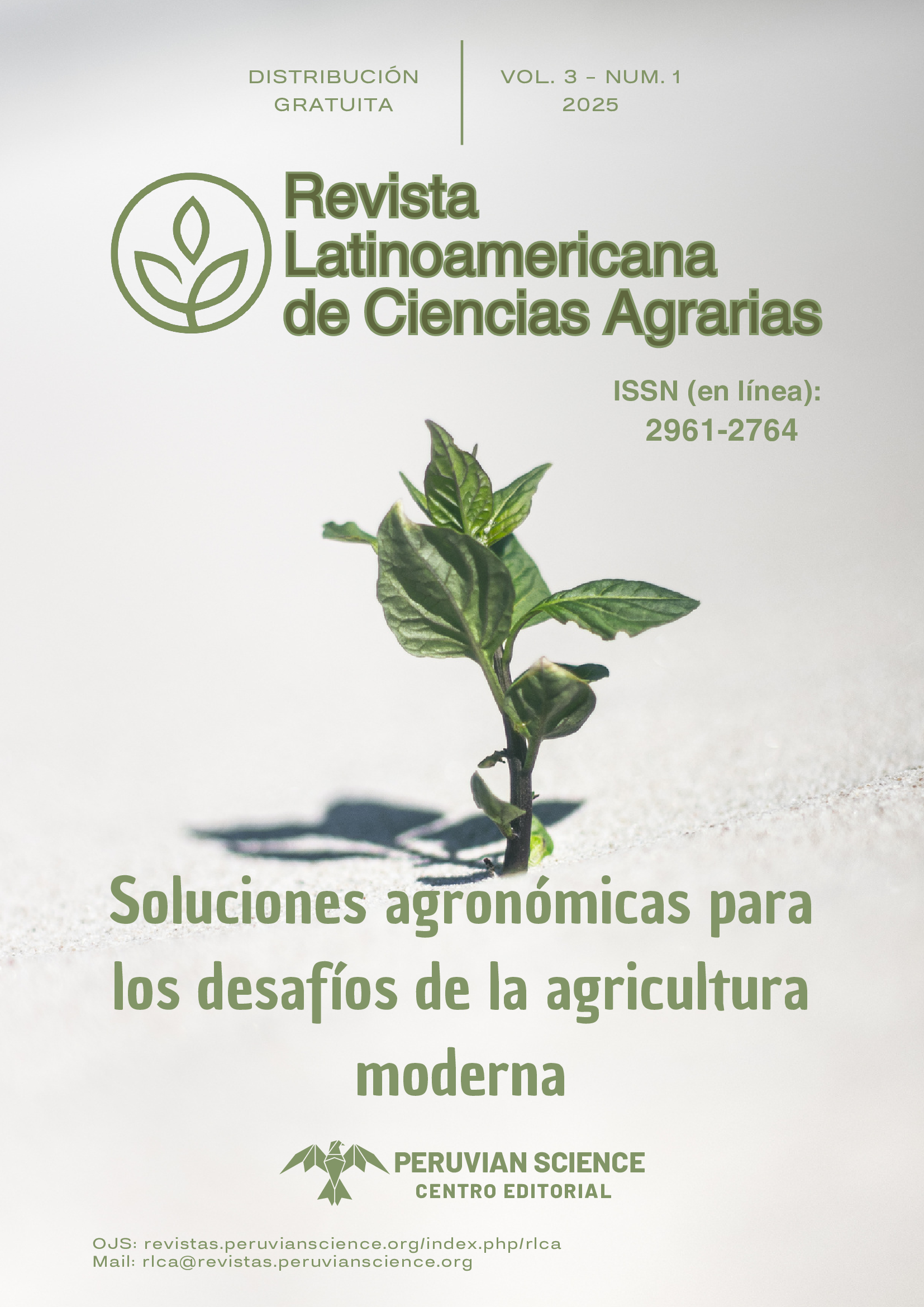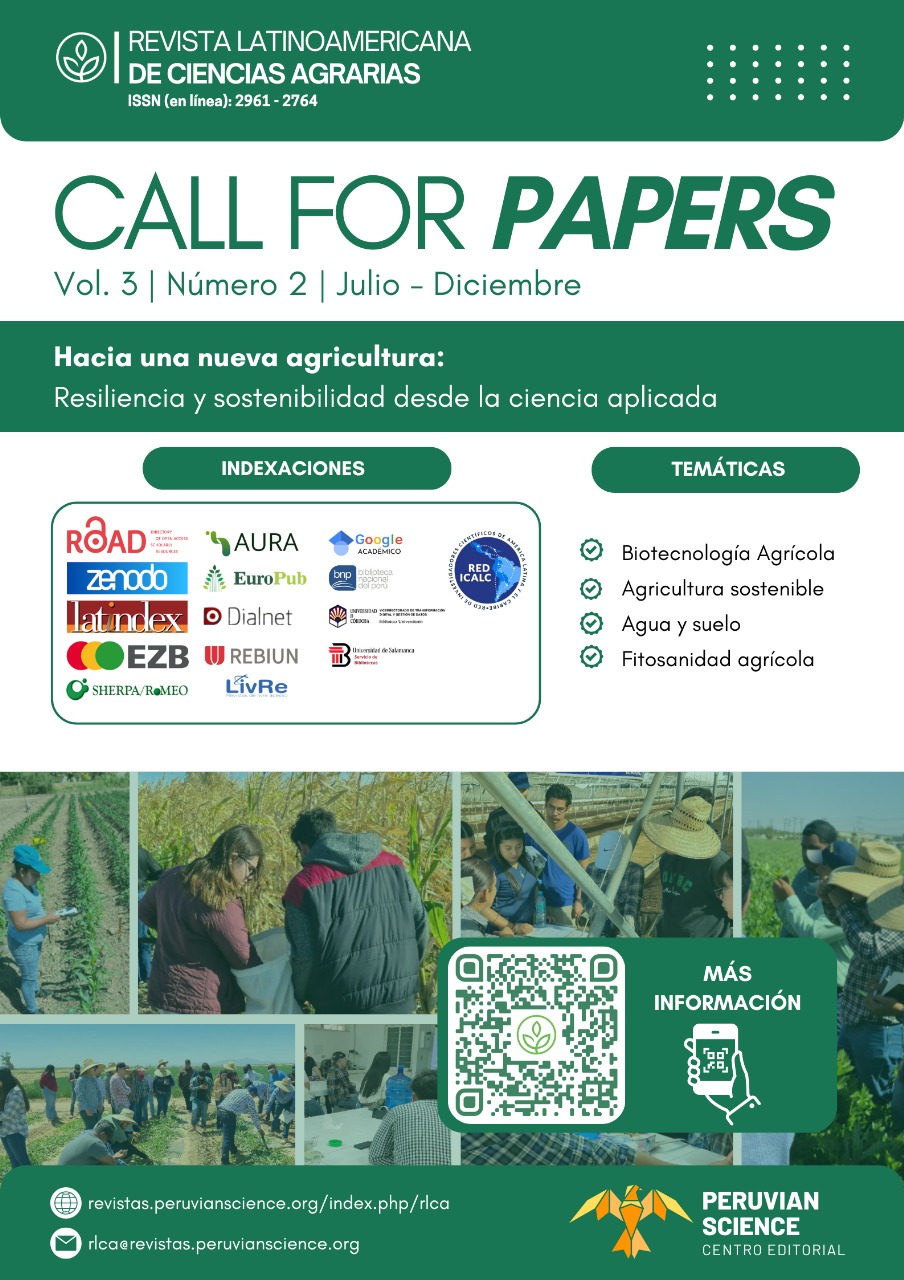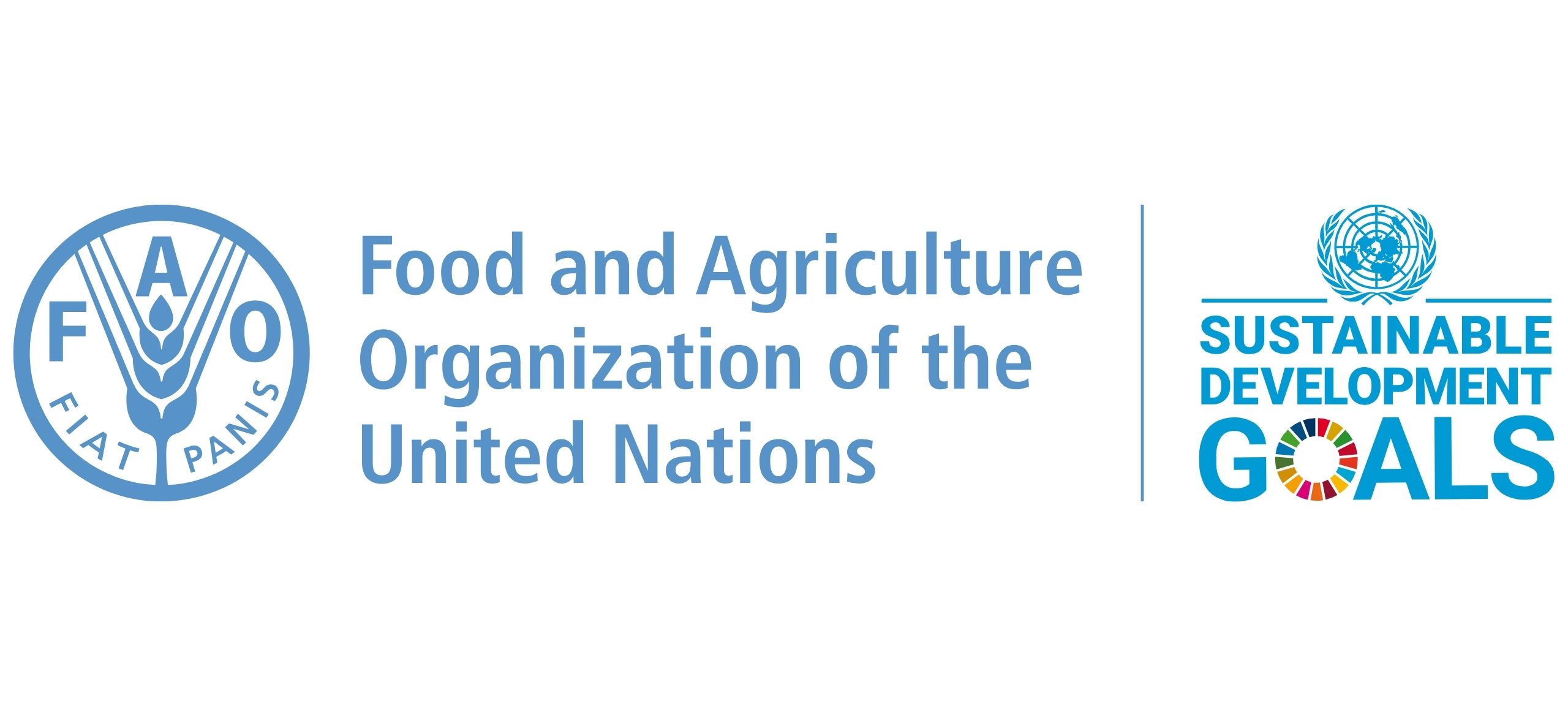Application of different dos es of molybdenum on soybean production (Glycine max L.)
Keywords:
Glycine max, fertilization, pods, yieldAbstract
Soybean cultivation, along with corn and wheat, is one of the most important crops in Paraguayan agriculture. It is the country's main source of foreign currency and a key contributor to the national economy. In recent years, foliar fertilization has become a widely used technique due to its effectiveness and efficiency in meeting micronutrient needs. This research was carried out with the objective of analyzing the effects of different doses of Molybdenum and its relationship on the growth and yield parameters of the soybean crop (Glycine max L.), being conducted in the district of Santa Fe del Paraná, Alto Paraná, in a private property, in which the experimental design of completely randomized blocks was used with 5 doses of molybdenum and 4 repetitions, totaling 20 experimental units. The treatments were: T1 control, T2 0.150 l ha-1, T3 0.250 l ha-1, T4 0.350 l ha-1, T5 0.450 l ha-1 of Molybdenum applied at the V4 phenological stage. The variables evaluated were plant height, number of pods per plant, thousand-grain weight and grain yield. The data were subjected to analysis of variance (ANOVA), through which it was found that none of the four variables presented statistically significant results. Plant height ranged from 1.07 to 1.13 m; pods per plant, 82.43 to 88.00 pods; thousand-kernel weight, 137 to 144 g; and yield per hectare, 2662.5 to 2789.6 kg. Plant height, number of pods per plant, thousand-grain weight and yield were not affected by the use of foliar molybdenum applied at the V4 stage.
Downloads
References
Amorim, R.S.S.; Taketa, S.T.; Senna, L.F.N.; Dorneles, M.S. & Jacob-Neto, J. Efecto de aplicación foliar de sal de cocina y Mo en la nodulación de la soja. Disponible en: Congresso Brasileiro De Ciencia Do Solo, Rio de Janeiro, 1997. Anais. Rio de Janeiro, 1997.
Barbosa, G.F.; Arf, O.; De Sá, M.E.; Do Nascimento, M.S., Orioli Júnior, V.; Fonseca, A.E.; Costa, R.S.S. Efeitos de doses de nitrogênio e de molibdênio na qualidade fisiológica das sementes e produtividade do feijoeiro (Phaseolus vulgaris) de inverno em sistema de plantio direto. Informativo ABRATES, v.15, n.1/2/3, p.106, 2005.
Berger, P.; Vieira, C.; Araújo, G. Efectos de dosis y tiempos de aplicación de molibdeno en el cultivo de frijol. Investigación Agropecuaria Brasileña, Brasilia, v.31, n.7, p.473-480, 1996.
CAPECO (Cámara paraguaya de exportadores y comercializadores de cereales y oleaginosas). 2023. Ranking de exportadores de soja (en línea). Consultado 15 abr. 2023. Disponible en https://capeco.org.py/2023/01/13/paraguay-desciende-dos-lugares-en-el-ranking-mundial-de-mayores-productores-y-exportadores-de-soja/#:~:text=Paraguay%20baj%C3%B3%20dos%20lugares%20tanto,Comercializadores%20de%20Cereales%20y%20Oleaginosas%20
Ciampitti, I., Garcia, F. Requerimientos nutricionales. Absorción y extracción de macronutrientes y nutrientes secundarios. I. Cereales, oleaginosos e industriales. Archivo Agronómico 11. 2007. https://inta.gob.ar/sites/default/files/script-tmp-inta-fertilizacin-con-cobalto-y-molibdeno-soja.pdf
Huespe, H.; Spinzi, L.; Curiel, M.; Burgos, S. 1995. Atlas ambiental de la región oriental del Paraguay. San Lorenzo, PY: CIF / FCA / GTZ. 2 v, 68 p.
López, O. G., Erico, E. G., De Llamas, P. A., Molinas, A. S., Franco, E. S., García, S., y Ríos, E. O. (1995). Estudio de reconocimiento de suelos, capacidad de uso de la tierra y propuesta de ordenamiento territorial preliminar de la región oriental del Paraguay. Asunción - Paraguay: VOL. 1. Consultado en 12 de Abril de 2022. Disponible en: https://www.geologiadelparaguay.com/Estudio-de-Reconocimiento-de-Suelos-Regi%C3%B3n-Oriental-Paraguay.pdf
Marcondes, J.A.P. y Caires, E.F. (2005). Aplicação de molibdênio e cobalto na semente para cultivo da soja. Bragantia, vol. 64, n. 4, p. 687-694. Disponible en: http://dx.doi.org/10.1590/S0006-87052005000400019.
Martens, DD; Westermann, DT. 1991. Fertilizer applications for correcting micronutrient deficiencies. In Michelson, SH. Micronutrients in Agriculture. 2 ed. Madison, US, SSSA. p. 549-584.
Milani, G.L.; Oliveira, J.A.; Silva, L.H.C.; Pinho, E.V.R.V. & Guimarães, R.M. (2008) Nodulação e desen-volvimento de plantas oriundas de sementes de soja com altos teores de molibdênio. Revista Brasileira de Sementes, vol. 30, n. 2, p. 19- 27.3
Melgar, R. (2011). Molibdeno y Cobalto: Dos micronutrientes esenciales en la producción de soja. Revista Fertilizar, 26-29 p.
Moraes, L. M. F., Lana, R. M. Q, Mendes, C., Mendes, M., Monteiro, A., Alves, J. F., (2008). Redistribución del molibdeno aplicado via foliar em diferentes momentos del cultivo de soja. Consultado el 03 de mayo de 2022. Disponible en: https://www.scielo.br/j/cagro/a/VMr8gkWdpFJ5ZLRqx5QLGXF/?format=pdf&lang=pt
Nascimento, M. S.; ARF, O.; SILVA, M. G. Resposta do feijoeiro à aplicação de nitrogênio em cobertura e molibdênio via foliar. Acta Scientiarum. Agronomy, v. 26, n. 2, p. 153-159, 2004.
Polvani, Rafael Leibanteet et al. Respostas da soja inoculada a diferentes doses de molibdênio. 2012.
Soratto, R. P.; Silva, T. R. B.; Chidi, S. N.; Arf, O.; Sá, M. E.; Buzetti, S. Feijoeiro irrigado e a aplicação de nitrogênio em cobertura e molibdênio via foliar. Cultura Agronômica, v. 9, n. 1, p. 115-132, 2000.
Downloads
Published
How to Cite
Issue
Section
License
Copyright (c) 2025 Latin American Journal of Agricultural Sciences - RLCA

This work is licensed under a Creative Commons Attribution-NonCommercial-NoDerivatives 4.0 International License.
The Latin American Journal of Agricultural Sciences (ISSN online: 2961-2764) applies the Creative Commons Attribution (CC BY) license to the articles and other works we publish. Therefore, each manuscript submitted for publication by the journal will be processed under the CC BY license. This means that the manuscript author retains copyright to their published documents while agreeing that their article may be reused in whole or in part by anyone for any purpose, free of charge, including for commercial purposes. The use of this license is consistent with the open access policy of the journal, since this is the most open license considered "the gold standard" of open access.






















